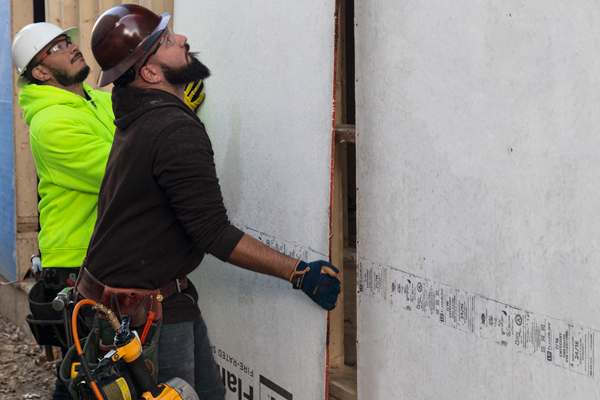Menu
Industry Trends5 min
Fire Factor by Risk Factor™: Calculating Fire Risk on Your Street
Warm, dry summertime weather is ideal for building houses, but these conditions can increase the likelihood of wildfires. As you may expect, California was ranked as the top wildfire-prone state in 2021 (2 233 666 acres burned), but the devastation of wildfires is also felt in mixed-humid areas like Missouri (40 262 acres burned), North Carolina (25 838 acres burned) and Mississippi (21 037 acres burned).
To offer greater support across the U.S., LP Structural Solutions is partnering with the First Street Foundation, which helps builders assess and protect against environmental threats from fire, flooding and wind. Let's dive into the First Street risks for fire and learn how to build for greater resiliency when the risk of fire is high.
What is Risk Factor From First Street?
Risk Factor® is an online assessment tool that makes it easy for builders and homeowners to understand environmental threats at an address level and to learn how risks can change with changing environmental threats.
What's different about this tool is that builders and homeowners enter a home's specific address to review current and future risks of a changing climate. You may not expect that a home in Missouri, for example, may be affected by wildfire, but if Risk Factor specifies that the fire risk for that address is high, the builder can take steps to mitigate those specific risks.
How Fire Factor by Risk Factor® Calculates Risks
The Fire Factor tool considers the vulnerability of the property’s building materials, distance to fire risk areas and potential burnable materials, like vegetation, to determine the risk of being impacted by wildfire, assigning the address a score ranging from 1 (minimal) to 10 (extreme).
An Integrated Approach to Fire Risk
When the risk from a potential wildfire is high, builders can consider incorporating preventative measures into the structure to help slow the spread of fire.
“If you’re building in an area prone to wildfires, it’s good practice to go beyond the minimum building code to add additional resilience in the structure,” says Scott Johnson, Construction Services Manager at LP.

LP FlameBlock Fire-Rated Sheathing is evaluated by ICC-ES, UL and Intertek as a component in fire-resistance-rated wall assemblies and fire-classified roof assemblies.
To learn more about LP FlameBlock sheathing’s design flexibility, visit the product page.
Continue Reading
Business Solutions
4 minQ&A: How Home Orientation Impacts Continuous Insulation
There’s a lot to consider when it comes to building an energy-efficient home for your clients and the many nuances that change with each build—including its orientation to the sun.
Continue ReadingResiliency Solutions
5 minHOW A RADIANT BARRIER CAN IMPROVE BURIED DUCT PERFORMANCE
There are several insulation methods based on attic design, but ducts placed over the bottom of truss chords and buried under insulation in a vented attic is a popular builder option.
Sustainability Solutions
8 minHow to Drive Effective Communication and Collaboration on the Jobsite
Every jobsite has a ton of moving parts, from product shipments, supplies, and schedules to subcontractors and homeowners. It's no wonder that many project teams can struggle to maintain quality jobsite communication and collaboration throughout the building process.
Sustainability Solutions
6 minCarbon Negative, Future Positive: LP® Structural Solutions Portfolio Releases Environmental Product Declarations
In an era where environmental responsibility is paramount, we are proud to announce a remarkable achievement: the LP® Structural Solutions portfolio has been officially designated as carbon negative. This milestone is a testament to our unwavering commitment to redefining construction materials for the better with a focus on sustainability, resiliency and groundbreaking advancements.